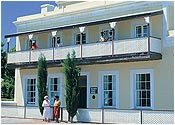The Colesberg Kemper Museum
Surrounded by koppies and flanked by the towering Coleskop, when the sun slips to the horizon, brushing the skies with brilliant hues, Coleskop’s former name, Toverberg (Magic Mountain), seems more appropriate. So named because, for the traveller, it is visible from 40km but appears to get no closer. In 1814, a mission station was built here in the hope of bringing peace to the volatile frontier area of the Cape Colony.
A second mission station, Hepzibah, was built a few kilometres away and the two soon attracted 1 700 Khoisan. In 1829, nervous farmers petitioned for a town to be established and 18 138ha was set aside. The first erven were sold in November 1830 and the town was named after Sir Lowry Cole, then Cape Governor. The Transvaal Republic’s President, Paul Kruger, born in Cradock in 1825, is believed to have spent his formative years on the farm, Vaalbank, falling in what was, by 1830, the town of Colesberg.
Today, Colesberg is a traveller’s oasis on the main Cape Town-Johannesburg route, the N1, offering many attractive accommodation establishments. In a sheep-farming area spread over half-a-million hectares, greater Colesberg breeds many of the country’s top Merinos. It is also renowned for producing high-quality racehorses.


